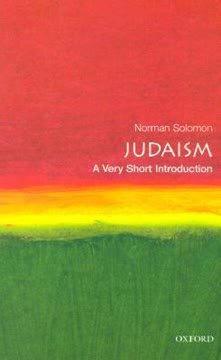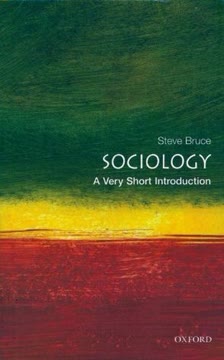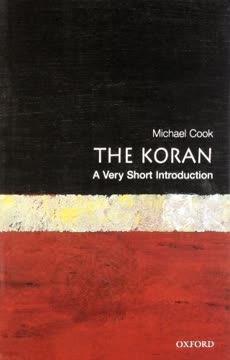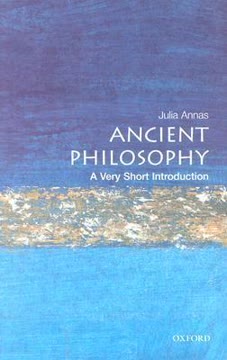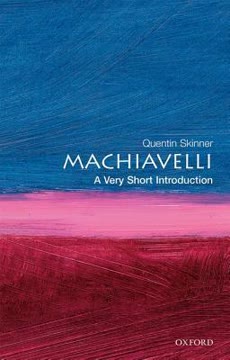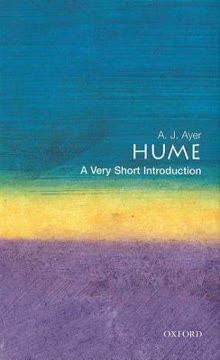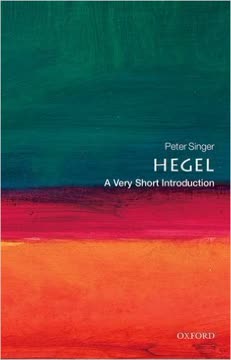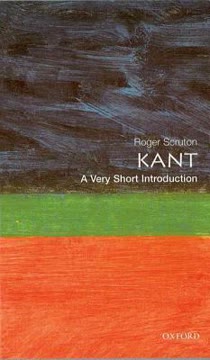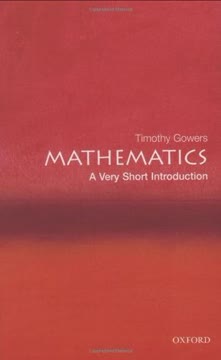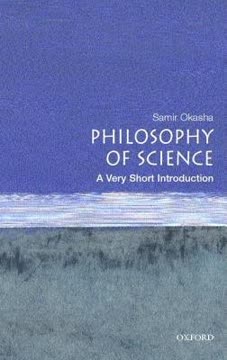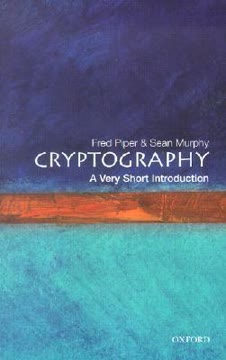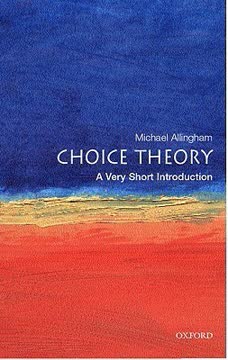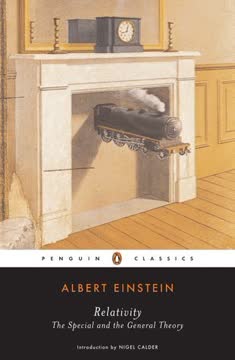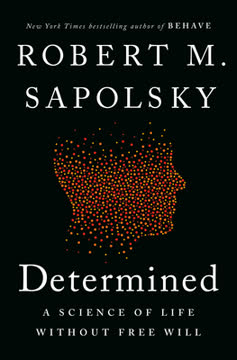نکات کلیدی
1. آگاهی: راز نهایی تجربهی ذهنی
چگونه ممکن است شلیک الکتریکی میلیونها سلول کوچک مغزی این را تولید کند – تجربهی ذهنی، خصوصی و آگاهانهی من؟
مسئلهی دشوار. آگاهی آشکارترین و در عین حال پیچیدهترین جنبهی تجربهی انسانی است. این شامل جنبههای ذهنی و کیفی زندگی ذهنی ما میشود – "چه حسی دارد" دیدن رنگها، احساس کردن عواطف یا فکر کردن. این پدیده قرنهاست که فیلسوفان و دانشمندان را به چالش کشیده و به شکلگیری "مسئلهی دشوار" آگاهی منجر شده است: چگونه فرآیندهای فیزیکی در مغز میتوانند به تجربیات ذهنی منجر شوند؟
نظریهها و رویکردها. نظریههای مختلفی تلاش میکنند آگاهی را توضیح دهند:
- دوگانهگرایی: ذهن و بدن مواد جداگانهای هستند
- مادهگرایی: آگاهی از فرآیندهای فیزیکی مغز ناشی میشود
- همهروانگرایی: آگاهی خاصیت بنیادی جهان است
- توهمگرایی: آگاهی همانطور که ما آن را درک میکنیم یک توهم است
با وجود تحقیقات و مباحثات شدید، هیچ نظریهی واحدی به پذیرش گسترده نرسیده است، که چالش عمیق آگاهی را برای درک واقعیت و خودمان نشان میدهد.
2. نقش مغز در آگاهی: فرآیندهای عصبی پیچیده
درون مغز فرآیندهای متعددی به صورت موازی در حال انجام هستند که ادراکات و افکار را هماهنگ کرده و رفتار ما را کنترل میکنند.
همبستگیهای عصبی آگاهی. علوم اعصاب پیشرفتهای قابل توجهی در شناسایی نواحی و فرآیندهای مغزی مرتبط با تجربیات آگاهانه داشته است. یافتههای کلیدی شامل:
- نقش تالاموس و قشر مغز در ایجاد آگاهی آگاهانه
- الگوهای عصبی خاص مرتبط با حالات مختلف آگاهی
- اهمیت یکپارچگی اطلاعات در سراسر نواحی مغزی
چالشها در پیوند مغز و آگاهی. با این حال، چندین مسئله درک ما را پیچیده میکند:
- ماهیت توزیعشدهی پردازش مغزی
- عدم وجود یک "مرکز آگاهی" مرکزی در مغز
- دشواری در توضیح چگونگی ترجمه فعالیت عصبی به تجربهی ذهنی
این چالشها نیاز به چارچوبهای مفهومی جدید و رویکردهای تجربی برای پر کردن شکاف بین فعالیت مغزی و تجربهی آگاهانه را برجسته میکنند.
3. زمان و فضا در آگاهی: به چالش کشیدن ادراکات ما
هنوز هیچکس موفق به پر کردن شکاف عمیق، شکاف بزرگ یا فاصلهی توضیحی بین درون و بیرون، ذهن و مغز، یا ذهنی و عینی نشده است.
ناهنجاریهای ادراک زمان. تجربهی ذهنی ما از زمان اغلب با اندازهگیریهای عینی متفاوت است و جنبههای جالبی از آگاهی را آشکار میکند:
- آزمایشهای لیبت دربارهی زمانبندی تصمیمات آگاهانه
- تأخیر ظاهری بین فعالیت عصبی و آگاهی آگاهانه
- "ارجاع معکوس" تجربیات آگاهانه در زمان
جنبههای فضایی آگاهی. ادراک ما از فضا و موقعیت بدنمان در آن نیز میتواند دستکاری شود:
- تجربیات خارج از بدن و پایهی عصبی آنها
- توهم دست لاستیکی و مالکیت بدن
- غفلت فضایی در بیماران آسیبدیدهی مغزی
این پدیدهها تصورات شهودی ما از چگونگی ارتباط آگاهی با زمان و فضا را به چالش میکشند و نشان میدهند که تجربیات ذهنی ما ممکن است به روشهای پیچیدهای توسط مغز ساخته شوند.
4. توهم بزرگ: بازاندیشی در آگاهی بصری
یافتههای نابینایی تغییر و نابینایی توجهی چالشی برای نحوهی طبیعی تفکر ما دربارهی تجربیات بصری خودمان ایجاد میکنند.
نابینایی تغییر. آزمایشها ناتوانی شگفتآور ما در توجه به تغییرات بزرگ در صحنههای بصری را نشان میدهند و ایدهی حفظ یک نمایهی دقیق و پیوسته از دنیای بصری ما را به چالش میکشند.
نابینایی توجهی. ما اغلب در توجه به اشیاء یا رویدادهای غیرمنتظره وقتی توجه ما به جای دیگری معطوف است، حتی وقتی در دید مستقیم هستند، ناکام میمانیم.
پیامدها برای آگاهی. این پدیدهها نشان میدهند که آگاهی بصری ما ممکن است بسیار محدودتر و ساختهشدهتر از آنچه به طور شهودی باور داریم باشد:
- ادراک ما از یک دنیای بصری غنی و دقیق ممکن است یک توهم باشد
- آگاهی ممکن است شامل ایجاد پویا و محدود نمایههای مرتبط با وظیفه باشد
- توجه نقش مهمی در تعیین آنچه وارد آگاهی آگاهانهی ما میشود ایفا میکند
این یافتهها پیامدهای عمیقی برای درک ما از آگاهی و ادراک دارند و نشان میدهند که تجربهی ذهنی ما ممکن است نسخهای بسیار فیلتر شده و ساختهشده از واقعیت باشد.
5. خود گریزان: کاوش در ماهیت هویت
نظریهی بسته مشکل را وارونه میکند، بیننده را به بازیگر و دیدگاهها را به اعمال تبدیل میکند.
چالشها برای خود یکپارچه. پدیدهها و آزمایشهای مختلف حس شهودی ما از یک خود یکپارچه و پیوسته را به چالش میکشند:
- بیماران با مغز دوپاره و آگاهیهای متعدد
- اختلال هویت تجزیهای و شخصیتهای متعدد
- مفاهیم بودایی از بیخودی و توهم هویت دائمی
نظریههای خود. رویکردهای مختلفی تلاش میکنند حس ما از خود را توضیح دهند:
- نظریههای ایگو: یک خود واقعی و پایدار را فرض میکنند
- نظریههای بسته: خود را به عنوان مجموعهای از تجربیات بدون یک موجود مرکزی میبینند
- نظریههای روایتی: خود را به عنوان داستانی که میسازیم و به خودمان میگوییم میبینند
این دیدگاهها ما را مجبور میکنند تا ماهیت هویت شخصی و رابطهی آن با آگاهی را بازنگری کنیم و نشان میدهند که حس ما از خود ممکن است سیالتر و ساختهشدهتر از آنچه معمولاً فرض میکنیم باشد.
6. ارادهی آزاد: به چالش کشیدن حس کنترل آگاهانهی ما
دنت استدلال میکند که تئاتر دکارتی وجود ندارد.
چالشها برای ارادهی آزاد. یافتههای علمی و استدلالهای فلسفی مفهوم سنتی ما از ارادهی آزاد را به چالش کشیدهاند:
- آزمایشهای لیبت دربارهی زمانبندی تصمیمات آگاهانه
- تأثیر فرآیندهای ناخودآگاه بر انتخابهای ما
- مشکل آشتی دادن ارادهی آزاد با جبر یا تصادف
پیامدها و جایگزینها. این چالشها به دیدگاههای مختلفی دربارهی ارادهی آزاد و مسئولیت منجر شدهاند:
- سازگاریگرایی: تعریف مجدد ارادهی آزاد به روشهایی که با جبر سازگار است
- ناسازگاریگرایی سخت: رد امکان ارادهی آزاد
- توهمگرایی: دیدن حس ما از ارادهی آزاد به عنوان یک داستان مفید
این مباحث پیامدهای عمیقی برای درک ما از آگاهی، اخلاق و مسئولیت شخصی دارند و ما را مجبور میکنند تا ماهیت عاملیت انسانی و تصمیمگیری را بازنگری کنیم.
7. حالات تغییر یافته: گسترش درک ما از آگاهی
کانابیس بیش از شصت کانابینوئید دیگر و بسیاری از اجزای دیگر دارد که اثرات کمی متفاوت بر مغز و سیستم ایمنی دارند و ممکن است با یکدیگر تعامل داشته باشند.
حالات تغییر یافتهی متنوع. طیف گستردهای از تجربیات میتواند حالت عادی آگاهی ما را تغییر دهد:
- داروهای روانگردان (مانند روانگردانها، کانابیس، بیحسکنندهها)
- مدیتیشن و تمرینات تأملی
- خواب و رویاها
- تجربیات نزدیک به مرگ و تجربیات خارج از بدن
بینشها از حالات تغییر یافته. مطالعهی این پدیدهها میتواند بینشهای ارزشمندی دربارهی آگاهی ارائه دهد:
- انعطافپذیری ادراک و حس خود ما
- نقش سیستمهای مختلف مغزی در ایجاد تجربیات آگاهانه
- پتانسیل برای حالتهای آگاهی گسترشیافته یا جایگزین
تحقیقات در حالات تغییر یافته فرضیات ما دربارهی ماهیت و محدودیتهای آگاهی را به چالش میکشند و نشان میدهند که حالت بیداری عادی ما ممکن است تنها یکی از بسیاری از حالتهای ممکن آگاهی باشد.
8. تکامل آگاهی: سوالات حلنشده
آیا آگاهی یک سازگاری است؟ ممکن است به نظر برسد که باید باشد، زیرا ویژگیهای ناسازگار به زودی توسط انتخاب حذف میشوند، اما دو احتمال اصلی دیگر وجود دارد: آگاهی ممکن است یک محصول جانبی بیفایده باشد، یا ممکن است یک جزء جداییناپذیر از چیزی باشد که سازگار است (حتی اگر به نظر نرسد).
دیدگاههای تکاملی. نظریههای مختلفی منشأ و کارکردهای مختلفی برای آگاهی پیشنهاد میکنند:
- به عنوان یک سازگاری برای شناخت اجتماعی و نظریهی ذهن
- به عنوان یک محصول جانبی از تواناییهای شناختی دیگر
- به عنوان جنبهای ذاتی از پردازش اطلاعات پیچیده
چالشها در مطالعهی تکامل آگاهی. چندین عامل درک ما از چگونگی تکامل آگاهی را پیچیده میکنند:
- دشواری در تعریف و اندازهگیری آگاهی در گونههای مختلف
- عدم وجود شواهد فسیلی برای تجربیات ذهنی
- چالش در تمایز بین فرآیندهای آگاهانه و غیرآگاهانه در حیوانات
این سوالات حلنشده نیاز به رویکردهای بینرشتهای ترکیبی از علوم اعصاب، روانشناسی، فلسفه و زیستشناسی تکاملی برای کشف راز آگاهی و جایگاه آن در جهان طبیعی را برجسته میکنند.
آخرین بهروزرسانی::
FAQ
What's "Consciousness: A Very Short Introduction" about?
- Overview of Consciousness: The book provides a concise exploration of consciousness, addressing its complexities and the challenges it presents to philosophers and scientists.
- Historical Context: It delves into the historical struggle to understand consciousness, highlighting how it has been a topic of debate for millennia.
- Modern Approaches: The book discusses contemporary studies in psychology, biology, and neuroscience that attempt to tackle the "hard problem" of consciousness.
- Philosophical Perspectives: It examines various philosophical theories, including dualism and materialism, and their implications for understanding consciousness.
Why should I read "Consciousness: A Very Short Introduction"?
- Expert Insight: Written by Susan Blackmore, an expert in the field, the book offers authoritative insights into the study of consciousness.
- Accessible Introduction: It serves as an accessible entry point for anyone interested in the complex subject of consciousness, without requiring prior knowledge.
- Broad Coverage: The book covers a wide range of topics, from the nature of self and free will to altered states of consciousness and the evolution of consciousness.
- Stimulating Content: It challenges readers to think critically about their own experiences and the nature of consciousness itself.
What are the key takeaways of "Consciousness: A Very Short Introduction"?
- The Hard Problem: Consciousness is a deeply complex issue, with the "hard problem" being how subjective experiences arise from physical brain processes.
- Illusion of Self: The book suggests that the self may be an illusion, a concept that challenges traditional views of identity and consciousness.
- Consciousness and Evolution: It explores whether consciousness is an evolutionary adaptation or a byproduct of other cognitive processes.
- Role of Consciousness: The book questions the role of consciousness in decision-making and whether free will is an illusion.
What is the "hard problem" of consciousness as discussed in the book?
- Definition: The "hard problem," coined by philosopher David Chalmers, refers to the challenge of explaining how subjective experiences arise from physical brain processes.
- Subjectivity: It emphasizes the difficulty in understanding how objective brain functions translate into personal, subjective experiences.
- Philosophical Debate: The problem has led to various philosophical theories, including dualism and materialism, each attempting to address this gap.
- Ongoing Mystery: Despite advances in neuroscience, the hard problem remains unsolved, highlighting the complexity of consciousness.
How does Susan Blackmore address the concept of self in the book?
- Illusion of Self: Blackmore suggests that the self is an illusion, a temporary construct rather than a persistent entity.
- Bundle Theory: The book discusses bundle theory, which posits that the self is a collection of experiences rather than a singular, continuous entity.
- Buddhist Perspective: It aligns with Buddhist teachings that reject the notion of a permanent self, viewing it as a source of suffering.
- Implications: This perspective challenges traditional views of identity and has implications for understanding consciousness and personal responsibility.
What are some theories of consciousness explored in the book?
- Dualism: The book examines dualism, the idea that mind and body are separate, and its challenges in explaining consciousness.
- Materialism: It discusses materialism, which posits that consciousness arises from physical processes in the brain, yet struggles with the subjective nature of experience.
- Global Workspace Theory: This theory suggests that consciousness arises from information being processed in a global workspace within the brain.
- Multiple Drafts Theory: Proposed by Daniel Dennett, this theory argues against a central "theatre" of consciousness, suggesting instead that multiple processes occur in parallel.
How does the book explore the relationship between consciousness and free will?
- Free Will Debate: The book delves into the philosophical debate on whether free will exists or is an illusion.
- Libet's Experiments: It discusses Benjamin Libet's experiments, which suggest that brain activity precedes conscious decision-making, challenging the notion of free will.
- Conscious Veto: Libet's idea of a "conscious veto" is explored, suggesting that while we may not initiate actions, we can consciously prevent them.
- Implications for Responsibility: The discussion raises questions about moral responsibility and the role of consciousness in decision-making.
What role do altered states of consciousness play in the book?
- Definition and Examples: The book defines altered states of consciousness (ASCs) and provides examples such as dreaming, hypnosis, and drug-induced states.
- Subjective Experience: It emphasizes the subjective nature of ASCs and the challenges in defining and measuring them.
- Lucid Dreaming: The phenomenon of lucid dreaming is explored, where individuals are aware they are dreaming and can sometimes control the dream.
- Implications for Consciousness: ASCs provide insights into the nature of consciousness and challenge the notion of a singular, continuous conscious experience.
How does "Consciousness: A Very Short Introduction" address the evolution of consciousness?
- Evolutionary Theories: The book explores whether consciousness is an evolutionary adaptation or a byproduct of other cognitive processes.
- Consciousness in Animals: It discusses the challenges in determining which animals are conscious and the implications for understanding consciousness.
- Social Intelligence: The role of social intelligence in the evolution of consciousness is considered, particularly in highly social animals like humans.
- Zombies and Conscies: The book uses thought experiments involving zombies (creatures without consciousness) to explore the necessity and function of consciousness.
What are some of the best quotes from "Consciousness: A Very Short Introduction" and what do they mean?
- "Consciousness is a grand illusion." This quote suggests that our perception of a continuous, unified consciousness may be misleading, challenging traditional views of self and experience.
- "The self is not an entity but a bundle of sensations." Reflecting bundle theory, this quote questions the existence of a persistent self, proposing instead that the self is a collection of experiences.
- "The hard problem of consciousness remains as deep as ever." Highlighting the ongoing mystery, this quote underscores the complexity of understanding how subjective experiences arise from physical processes.
- "Could consciousness be completely powerless?" This quote questions the role of consciousness in decision-making and whether it has any causal power, challenging the notion of free will.
How does the book address the concept of consciousness as an illusion?
- Grand Illusion Theory: The book discusses the idea that our perception of a rich, detailed conscious experience is an illusion, as demonstrated by phenomena like change blindness.
- Theatre Metaphor: It challenges the metaphor of consciousness as a theatre, suggesting that there is no central "stage" where experiences are presented to a self.
- Delusion of Self: The book posits that the self is a delusion, a construct that arises when we question our own consciousness.
- Implications for Understanding: This perspective has profound implications for how we understand consciousness, identity, and the nature of experience.
What insights does the book provide on the neural correlates of consciousness (NCC)?
- Definition of NCC: Neural correlates of consciousness are the specific brain processes associated with conscious experiences.
- Visual Consciousness Studies: The book discusses studies on visual consciousness, such as those involving ambiguous figures and binocular rivalry, to identify NCCs.
- Challenges in Identification: Despite identifying correlations, the book highlights the difficulty in explaining how these brain processes give rise to subjective experiences.
- Ongoing Research: It emphasizes the importance of continued research in neuroscience to better understand the relationship between brain activity and consciousness.
نقد و بررسی
کتاب آگاهی: یک مقدمهی بسیار کوتاه نقدهای متفاوتی دریافت میکند. بسیاری آن را برانگیزنده و خوشنوشته میدانند و از مرور مختصر نظریههای آگاهی تمجید میکنند. با این حال، برخی به جانبداری آن نسبت به دیدگاههای نویسنده، بهویژه ایدهی اینکه آگاهی یک توهم است، انتقاد میکنند. خوانندگان از شواهد علمی و آزمایشهای ارائهشده قدردانی میکنند اما به پیچیدگی کتاب برای مبتدیان اشاره دارند. رد ارادهی آزاد و خود توسط نویسنده باعث بحث و جدل میشود. بهطور کلی، این کتاب بهعنوان یک مقدمهی تحریکآمیز به موضوع دیده میشود، هرچند با محدودیتهایی در عینیت و جامعیت.
Very Short Introductions Series Series
